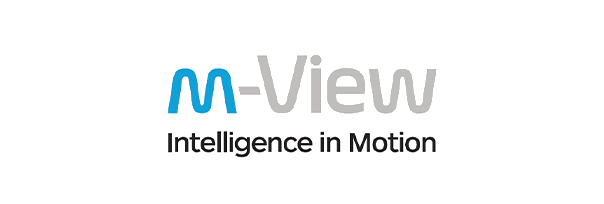What is a digital receipt - All you need to know
A receipt is a document that acts as the confirmation of the processed payment. In older days, companies used to send paper receipts in the mail once the payment was received on their end. It had been a backbreaking task for companies to maintain this for a long time.
But there is always a better way to do it. Enter digital receipts. Digital receipts are when you store receipts electronically in the digital medium. This has indeed transformed the way we organize and save receipts. Receipts are essential for both conformations of the transaction and tax compliance. For this reason, you are obliged to manage receipts at least for a few months.
Long gone are the days of sitting in an office surrounded by walls and cupboards stacked with papers. We are gradually moving toward remote-style work environments, and even in a static workplace, storing paper receipts is no longer practical.
The good news is that most companies have adopted paperless invoice processing and digital payment receipts. Isn’t it time to make the switch?But one good news is that most companies have moved to digital payment receipts. Isn’t it time?
Understanding digital receipts: The basics
Core definition
Digital receipts are electronic records of payments, sent via email or downloaded from payment systems, replacing paper-based confirmations. They serve the same function as traditional receipts, proof of payment, but in a digital format that can be accessed, stored, and shared without physical paperwork.
Whether you're buying office supplies or subscribing to a software tool, these digital confirmations are automatically generated and sent to your inbox or made available through your payment provider. What is a digital receipt? At its core, it's a smarter way to document every transaction in your business.
Evolution from paper receipts
For decades, paper receipts dominated transaction records. Businesses had to print, file, and store them physically, taking up space, costing money, and creating waste. Digital receipts eliminate that need entirely.
By moving your transaction logs online, you get faster access, easier sharing, and zero clutter. What used to be a pile of paper in a drawer is now a searchable folder on your device or cloud system.
Key components of e-receipts
Every digital payment receipt typically includes key details like the invoice number, transaction or payment date, vendor name, recipient contact information, itemized charges, and total amount.
Some formats even add tax breakdowns, payment methods, or return instructions, everything needed for compliance or bookkeeping.
Why they matter for your business
This shift to digital matters for your business. Digital receipts help you keep clean records for audits, ensure you're ready for tax season, and simplify expense management.
You save time, reduce the risk of loss, and stay organized across all departments. Whether you’re managing a few transactions or thousands, switching to digital receipts gives you control and clarity
Why businesses should adopt digital receipts
Supporting remote work trends
Switching to digital receipts isn’t just a tech upgrade; it’s a business necessity. As remote work continues to reshape operations, digital receipts make it easier for teams to access and organize financial records from anywhere.
There’s no need to ship documents or dig through filing cabinets. Your finance team can retrieve what they need in seconds, no matter where they’re working from.
Meeting customer expectations
Customers also expect speed and convenience. When someone pays for a product or service, they want immediate confirmation. A digital payment receipt delivered right to their inbox builds trust and professionalism.
It shows that your systems are efficient and that your business respects its time. If you’ve ever wondered what is a digital receipt, the answer lies in this very experience - timely, clean, and customer-centric.
Ensuring IRS compliance
Digital receipts also help you stay IRS-compliant. The IRS accepts electronic records as valid proof of transactions, as long as they’re accurate and accessible. This means your business can skip the paper trail while still being fully audit-ready. No more panic during tax season. Everything you need is organized, searchable, and secure.
Reducing operational costs
Cost is another major reason to go digital. Printing, storing, and mailing paper receipts may seem minor, but those costs add up fast. E-receipts eliminate those recurring expenses, freeing up budget and reducing waste.
Enhancing transaction transparency
Finally, digital receipts enhance transparency across your organization. With centralized, trackable records, it’s easier to monitor spending, detect errors, and maintain accountability.
Everyone involved, from employees to vendors, has a clear view of the transaction history, which strengthens internal controls and improves decision-making. In short, digital receipts help you meet modern expectations, cut down on inefficiencies, and build a smarter, more resilient operation.
How digital receipts work in business transactions
When a payment is made to a vendor, a digital receipt is typically generated immediately. Regardless of whether the payment is processed through a credit card, ACH transfer, or an online payment gateway, the receipt is either emailed to the payer or made available for download from the platform.
When customers pay you, the process works the same, just reversed. Your system (or accounting software) should be set up to automatically generate and send a digital payment receipt. This provides your customers with immediate confirmation while reducing your manual workload.
Most modern businesses integrate digital receipts directly into their payment systems. This creates a seamless experience, receipts are issued automatically when a payment is confirmed, and both the business and customer can access a complete transaction history.
Some vendors may still rely on physical receipts, but these can be scanned and digitized. While less efficient, this approach ensures you maintain a complete electronic archive. Scanning tools and apps can convert paper receipts into searchable PDFs or structured data for easy storage.
Real-time notifications are another powerful advantage for businesses. When a payment is made or received, you can be notified instantly through email or app alerts. These timely notifications often include a link to the digital receipt, making it easy to keep up with your cash flow on the go.
Handling international transactions? Digital receipts can manage multiple currencies. Advanced platforms support foreign currency formats, automatically converting totals and displaying relevant tax or exchange details. This ensures consistency and accuracy when dealing with global vendors or customers.
Key benefits of digital receipts for businesses
Enhanced data security
Digital receipts provide superior data security, as they are stored in encrypted formats on password-protected platforms or cloud systems. In contrast to paper receipts, which can be easily lost or accessed by unauthorized individuals, digital receipts are safeguarded by multiple layers of security. Access is restricted to authorized personnel, significantly reducing the likelihood of data breaches or fraud.
Eco-friendly and sustainable
They’re also eco-friendly and sustainable. By eliminating the need for paper, ink, and physical storage, your business reduces its environmental impact. This not only cuts waste but also aligns your operations with green initiatives, something customers and partners increasingly value. A digital-first mindset shows you're forward-thinking and environmentally responsible.
Seamless contactless payments
Digital receipts support seamless contactless payments. In a world where speed and hygiene matter more than ever, e-receipts wrap up the payment experience neatly. After a quick tap or click to pay, your customers instantly receive a digital payment receipt, no printer or touchpoint required. It’s efficient, safe, and modern.
Simplified storage and access
Storage and access become much simpler. You can store thousands of e-receipts without cluttering your workspace or needing bulky filing cabinets. Whether they’re kept on a local device or cloud server, finding a specific receipt is as easy as running a quick search - by vendor, date, amount, or keyword. This is especially true for any digital payment receipt, which often needs to be retrieved instantly during audits or reconciliations.
Streamlined tax and audit compliance
Tax and audit compliance is easier to manage. Digital receipts are formatted for clarity, categorized automatically, and backed up securely. When audit season rolls around, your finance team isn’t scrambling to collect or verify paper records. Everything you need is organized, timestamped, and ready to go, making compliance far less stressful.
For many businesses, asking what is a digital receipt is just the starting point. The deeper value lies in how it transforms operations. Digital systems enable layered access across departments, so marketing, finance, and compliance teams can all retrieve the same digital payment receipt without duplicated requests. That level of accessibility can significantly reduce friction and boost overall efficiency.
Challenges of relying on paper receipts
Physical storage constraints
Paper receipts come with major storage limitations. As your business grows, so does the volume of receipts you generate and receive.
Filing cabinets, folders, and physical storage boxes take up valuable space and are impractical, especially for remote or teams that can’t access physical locations regularly.
Risk of loss or potential damage
There’s also a real risk of loss or damage. Receipts can be easily misplaced, torn, smudged, or destroyed by fire, water, or time.
Once lost, those records are gone, and so is your proof of transaction. That can lead to compliance issues, accounting discrepancies, or disputes with vendors or customers.
Time-intensive organization
Organizing paper receipts is time-consuming and inefficient. Finance teams must manually sort and label receipts by date, vendor, category, or project.
It’s a tedious process prone to human error. Even minor misfiling can create major delays when you’re searching for a specific receipt under time pressure.
Environmental waste concerns
Environmental waste is another big issue. Billions of paper receipts are printed every year, and more than 40% are discarded within minutes.
That waste ends up in landfills, contributes to deforestation, and increases your company’s carbon footprint. Moving away from paper helps your business take a stand on sustainability.
Lack of scalability for growth
Scaling becomes a logistical nightmare. As your transaction volume grows, so does the pile of receipts.
Managing that with paper becomes nearly impossible without expanding your storage systems, additional staff effort, or greater audit risk. It’s a bottleneck that slows down operations and limits your ability to scale efficiently and effectively.
Major inefficiency in audits
Finally, paper receipts create friction during audits. When the IRS or internal auditors request documentation, you’re stuck hunting through drawers and boxes.
Physical copies need to be photocopied, scanned, or reprinted. This not only delays the audit process but also increases the administrative burden across your finance department.
Strategies for storing and organizing digital receipts
Choosing secure storage solutions
Start by choosing secure storage solutions. Your digital receipts should be stored in systems that offer both accessibility and protection. Cloud-based platforms like Google Drive, Dropbox, or specialized financial tools ensure your receipts are backed up, encrypted, and available whenever you need them.
For extra control, businesses handling sensitive data may opt for encrypted local storage on internal servers or secured hard drives, ensuring compliance and reducing security risks effectively.
Categorizing receipts efficiently
Efficient categorization is key for quick access. Use receipt management software to automatically label and sort receipts by date, vendor, expense category, or project.
This allows your team to find documents instantly instead of digging through random folders. Consistent naming conventions and tagging practices will make your storage system cleaner and more reliable.
Ensuring robust data security
Implement comprehensive data security measures at every interaction point. The receipt storage platform must incorporate multi-factor authentication, enforce strong password policies, & limit access according to user roles.
Access to view or modify receipt records should be restricted exclusively to authorized personnel. These measures safeguard financial data against unauthorized access, accidental loss, or internal abuse.
Integrating with accounting software
Integrate your digital receipt storage with accounting software. Platforms like QuickBooks and Xero allow you to sync receipts directly with transactions.
This makes expense reporting smoother, reconciliation faster, and compliance easier. When receipts are attached to corresponding entries in your books, it eliminates the guesswork and streamlines month-end closing.
Automating receipt collection
Automate receipt collection whenever possible. Instead of manually uploading every digital payment receipt, use automation tools to capture them as soon as a transaction occurs. Expense management software can fetch receipts from emails, payment platforms, or even scanned paper versions and categorize them automatically.
By applying these strategies, you turn digital receipt management into a streamlined, secure process that supports compliance and improves your financial visibility. The more organized your system is, the less time you’ll spend on admin work, and the more confident you’ll feel when audits or tax filing deadlines approach.
Overcoming challenges in digital receipt adoption
Mitigating cybersecurity risks
Cybersecurity is a top concern when adopting digital receipts. Receipts contain sensitive financial information, so using secure, encrypted platforms is non-negotiable.
Choose software that offers end-to-end encryption and regularly updated security protocols. Implement access controls and audit trails to monitor who views or modifies records.
Managing cloud storage costs
Managing cloud storage costs is another common hurdle. While cloud solutions offer flexibility, some charge based on data volume.
To avoid overspending, assess your storage needs and select platforms, like Volopay, that offer unlimited or scalable storage at predictable rates. Archiving old receipts and compressing files can also help control usage.
Software learning curves
The learning curve for new software can slow adoption. Some employees may resist change or struggle to adjust.
To ease the transition, provide training sessions, create user guides, and offer hands-on support. Choose software with intuitive interfaces and strong customer support to make onboarding easier for your team.
Handling data overload
Data overload can become a problem if receipts aren’t organized properly. High transaction volumes can flood your system with files, making it hard to find what you need.
Use auto-tagging, folder hierarchies, and search tools to stay organized. The right software will let you filter by vendor, date, or amount to reduce clutter.
Ensuring secure reliable backups
Reliable backups are essential to prevent data loss. System crashes, accidental deletions, or outages can put your receipt data at risk.
Set up automatic backups, either to another cloud service or a secure offline system. Make backup schedules part of your company’s IT policy to ensure consistency.
Addressing vendor compatibility
Vendor compatibility is the final challenge. Not all vendors offer digital receipts. In these cases, ask for PDFs or scanned versions, or use OCR tools to digitize paper ones.
Encourage vendors to switch to e-receipts by highlighting the shared benefits of speed, accuracy, and security.
Technology trends transforming digital receipts
AI for automated processing
AI is one of the highest in-demand trends in the world of technology, particularly in financial tech. The automation and machine learning capabilities of AI tools remove the redundant manual tasks so that teams can focus on strategic tasks as a result, AI is seeing a signifcant uptick in its incorporation across different types of technology.
Blockchain for secure records
Blockchain is emerging as a secure way to store digital receipts. By using blockchain technology, businesses can create tamper-proof records that are timestamped and verifiable. This enhances data integrity and ensures that receipts haven’t been altered, which is especially valuable in high-compliance industries or for audit trails.
Mobile receipt management apps
Mobile receipt management apps offer flexibility for on-the-go users. With these apps, employees can scan or upload receipts from their phones immediately after a transaction. This is ideal for field workers, traveling employees, or anyone needing to submit expenses without delay. These apps also sync with cloud storage or accounting software in real time.
Cloud-based accessibility solutions
Cloud-based accessibility solutions are driving efficiency. Cloud platforms allow your team to access digital receipts anytime, from any location. This supports remote work, ensures smoother collaboration, and eliminates the bottlenecks of location-dependent access. Real-time updates and shared folders keep everyone on the same page.
Digital wallet integration
Integration with digital wallets is making receipt management even more seamless. When customers pay using platforms like Apple Pay or Google Pay, digital payment receipts can be automatically stored within those apps or sent to your system. This reduces friction and improves accuracy, especially in consumer-facing businesses.
These technology trends are reshaping how businesses think about receipt storage, retrieval, and analysis. By adopting smart tools like AI, blockchain, mobile apps, cloud storage, and wallet integration, your company stays ahead of the curve which helps in creating a faster, more secure, and more scalable financial system.
Switch to Volopay and manage all your digital receipts in one place!
Best practices for implementing digital receipts
1. Educating your team
Start by educating your team. Introduce digital receipt systems with clear training sessions and documentation. Explain how the new process works, why it matters, and how it benefits everyone, from finance teams to field employees. Choose tools with user-friendly interfaces to encourage adoption and minimize resistance.
2. Setting up automated workflows
Implement automated workflows to manage routine tasks efficiently. Automation minimizes manual input and reduces the likelihood of human error. Utilize software that automatically extracts receipts from emails or payment systems, organizes them into appropriate categories, and associates them with corresponding transactions. This approach ensures accuracy, prevents oversight, and enhances the speed and consistency of the process.
3. Communicating with vendors
Maintain open communication with your vendors. Encourage vendors to provide receipts in digital formats like PDFs or e-invoices. If a vendor still uses paper receipts, request a scanned copy or use a receipt scanning tool to convert it yourself. The more you standardize your process, the easier it becomes to manage your records.
4. Regular data audits
Perform regular data audits to maintain accuracy and compliance. Routinely examine your digital receipt system for missing entries, duplicates, or misclassified expenses. This practice enhances the precision of your financial reports and ensures your business is well-prepared for audits or tax filings. Establish auditing as a scheduled routine rather than a reactive measure.
5. Leveraging analytics for insights
Utilize analytics to gain financial insights. Your digital receipt data holds valuable trends such as spending patterns, vendor activity, or budget overruns. Use analytics tools to monitor this information and identify opportunities to cut costs, negotiate better vendor terms, or improve budget allocations. Insights from your receipts can drive smarter decisions.
Implementing digital receipts isn’t just about switching formats, it’s about optimizing your entire expense management process. These best practices help ensure a smooth transition and long-term success, turning what was once a pile of paperwork into a high-performance system.
Streamline digital receipts with Volopay’s solutions
Automated receipt management
Every time a transaction occurs using your Volopay's corporate card, a digital receipt is automatically captured and stored. This eliminates manual uploads and reduces the risk of missing documents, ensuring every expense is properly recorded in real time. If you're wondering what is a digital receipt in the context of Volopay, it's the automation layer that simplifies your financial tracking.
Effortless receipt categorization
Receipts are effortlessly categorized by type of expense. Volopay’s expense management system uses smart tagging to organize receipts based on vendor, amount, department, or transaction category. This removes the tedious task of manual sorting and makes retrieval faster during audits or monthly reconciliations.
Unlimited storage capacity
Unlimited storage capacity means you never have to worry about running out of space. Unlike platforms that limit how many receipts you can save or charge extra for storage tiers, Volopay's invoice management platform gives you full access to your financial records - no caps, no constraints. Every receipt remains safely archived and accessible when you need it.
Seamless accounting integration
Integration with prominent accounting software such as QuickBooks and Xero ensures a seamless reconciliation process. Receipts are automatically matched with ledger entries, simplifying reporting and maintaining financial accuracy. This enables the finance team to close books more efficiently and concentrate on strategic priorities.
Volopay’s digital receipt features help you stay compliant, organized, and efficient, without extra effort. Whether you're scaling your business or tightening up your audit readiness, Volopay gives you the tools to manage receipts the smart way.








Trusted by finance teams at startups to enterprises.
Get the best receipt management software for your business
FAQs
There is no limitation in the duration availability. You can see your whole history of payments and digital receipts anytime soon.
You can either download and send them in the mail or provide access to the folder they are saved. If your accountant has access to Volopay expense management software, they can access the receipts from there.
It is not possible to upload the payment details of a cash payment transaction.
It is possible to download and export the file from the Volopay suite to a local folder or a drive. Under each paid bill, you can see the download option. If you click on it, you can save receipts to your local computer and later move it to any online drive or send through emails to other members of the team.